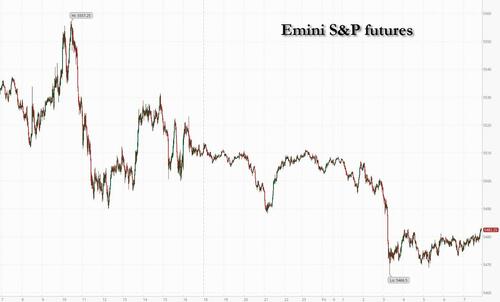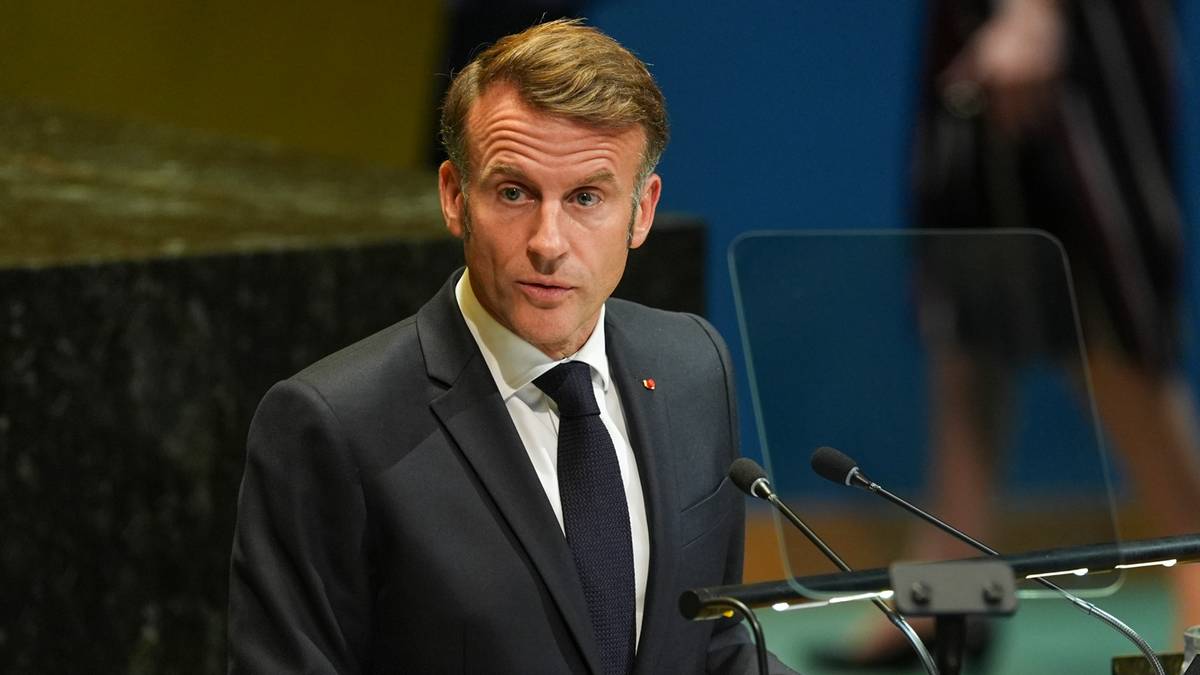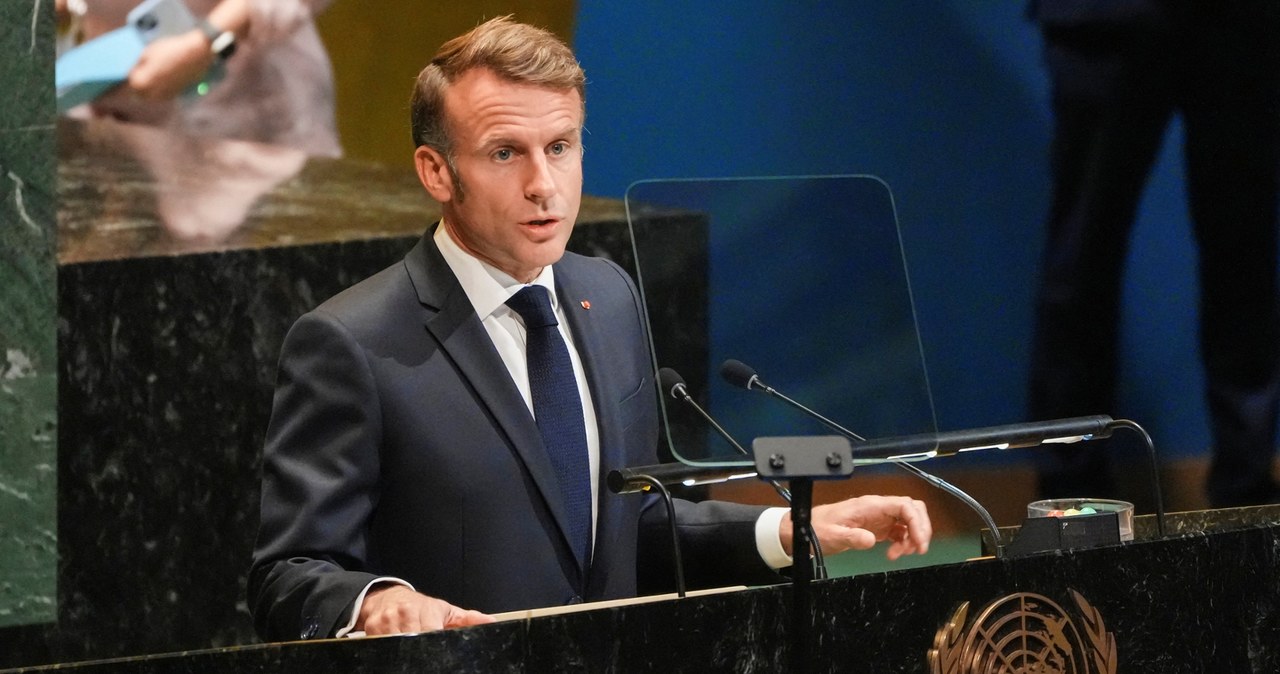
Futures Slide Ahead Of Critical Jobs Report
Futures are set to end a dismal first week of September lower, with tech again under pressure ahead of a very important jobs report. As of 8:00am, S&P futures are down 0.6% set for a 4th straight day of declines following a sudden dump around the European open; Nasdaq futures slide 1% as NVDA slides more than 2% pre-market while Broadcom also weighed on tech stocks after falling 9% after delivering a disappointing sales forecast. Bond yields are also lower, with the 10Y at 3.70%, the lowest since June 2023 as 2-, 5-, 10- yr yields are 3bp, 3bp, 3bp lower. The Bloomberg dollar index was lower for third day while the yen continues to surge on expectations today’s NFP will come in below expectations and greenlight a 50bps rate cut. Commodities are mixed with base metals higher and oil flat. Today, all eyes on the NFP print at 8.30am ET. Consensus expects 165k jobs being added, with unemployment dropping to 4.2% (our full preview is here). Fed’s Williams and Waller will speak this afternoon before the blackout period begins.

In premarket trading, Broadcom weighed on tech stocks as it falls 7% after the chipmaker gave a revenue forecast that’s seen as disappointing. Other chip stocks are down in sympathy (NVDA -1.3%, AMD -0.9%). US Steel is up 2% after Cleveland-Cliffs’s top executive said he’s still in the market for his rival’s assets. Here are other notable premarket movers:
- Bowlero jumps 12% after the operator of bowling centers reported revenue for the fourth quarter that came in above the average analyst estimate.
- DocuSign ticks 1% lower after the e-signature company reported billings growth that analysts viewed as weak.
- Mobileye slips 2% after Bloomberg reported Intel is considering options for its stake in the automated driving systems provider.
- Planet Labs slumps 9% after the Earth-imaging company’s revenue forecast for the current quarter fell short of Wall Street expectations.
- Samsara rises 4% after the application software company raised its full-year forecast.
- Smartsheet climbs 4% after the software company reported second-quarter results that beat expectations and raised its full-year forecast for adjusted earnings.
- UiPath rises 8% after the software company’s full-year revenue forecast came in ahead of estimates.
Friday’s jobs report will help the Fed decide whether the US economy is heading for a soft landing or a recession after a week of mixed numbers that whipsawed markets. Swap traders are fully pricing in 25 basis points of cuts when Fed officials meet in two-weeks time, with a roughly 35% chance of a 50 basis-point reduction.
„There’s likely to be volatility in markets as we work through whether or not we can actually have a soft landing,” said Brent Schutte, chief investment officer at Northwestern Mutual Wealth Management Co. “Investors need to be ready for more volatility, based upon a transition from a rate-hike cycle to a rate-cut cycle.”
As noted in our preview (link here), economists expect today’s report will show a bounce in hiring and a tick lower in the unemployment rate in August, marking a stabilization after July. Payrolls probably rose by 165,000 last month following July’s 114,000 increase, according to the median estimate in a Bloomberg survey of economists. Unemployment probably edged down to 4.2%. “Risk markets are sensitive to growth dynamics rather than to interest rates right now, said Bilal Hafeez, chief executive officer and head of research at Macro Hive. “If we were to see a weak number, risk markets such as equities will take that badly.”
Europe’s Stoxx 600 dropped 0.3% to the lowest in 3 weeks, but was off the lows; even so, the index is headed for the biggest weekly decline in almost a year. A key measure of euro-zone wage growth eased, proving further assurance to ECB officials seeking to lower interest rates next week. Should inflation continue to abate, borrowing costs will be lowered every quarter until they reach 2.5%, according to a Bloomberg survey. Here are the biggest movers Friday:
- InPost surges as much as 8.9%, the best performance in Stoxx Europe 600 Index, as improving profitability in France and the UK helped the Polish parcel-locker operator beat 2Q expectations
- Sectra gains as much as 10%, reaching a record high, after the Swedish medical imaging and cybersecurity firm reported its latest earnings, which included a 10% beat to 1Q Ebitda
- Elis declines as much as 17%, the most since March 2020, after it was said to have made offer for US workwear firm Vestis. Bernstein says the offer may weigh on Elis shares in the short term
- Raiffeisen falls as much as 7.7% after suffering another setback at its Russian unit after a court in the country froze its shares in the subsidiary, further complicating efforts to sell it
- Rubis falls as much as 8.9% after the fuel distributor reported a sharp drop in first-half earnings. Analysts at CIC said the results missed expectations because of non-recurring items
- Volvo Car falls as much as 6.1% to their lowest since January as Goldman Sachs says it sees potential for downside depending on revenue development and better opportunities elsewhere
- Planisware shares slip as much as 3.8% as shareholder Ardian Group looks to exit its stake in the French software company to capitalize on the gains booked since its IPO earlier this year
- Avanza declines as much as 4.1%, the most in a month, after JPMorgan placed the Swedish retail-trading platform and bank on negative catalyst watch leading into its 3Q report
- Baloise Holding falls as much as 3.8% after being downgraded by UBS. Analysts say the insurer is fairly valued and argue reports it could be a takeover target are unlikely to come to fruition
- Next 15 plunges as much as 53%, the most on record and to a four-year low, after the consultancy firm warned results will be materially below expectations this year
- Cairn Homes shares fall as much as 4.6%, the most since December 2022, after the housebuilder confirmed this morning that CEO Michael Stanley has sold 8 million shares in the company
Earlier in the session, Asian stocks were steady, with the regional gauge poised for its worst week since July, amid muted trading as Hong Kong’s market was halted due to a typhoon. The MSCI Asia Pacific Index added 0.1%, erasing earlier losses, but was set to snap three weeks of gains as risk sentiment abates ahead of the US non-farm payrolls report, due later on Friday. The benchmark is headed for a weekly loss of 2.5% as concern was rekindled of overheating in artificial intelligence stocks. TSMC and Commonwealth Bank of Australia were among the biggest winners. Chinese shares in the mainland slid after news that the US administration plans export controls on critical technologies. Hong Kong scrapped trading for the day as Super Typhoon Yagi passed through the region. Persistent economic weakness in China, that prompted several strategists to lower their outlook on the nation’s stocks, has also quelled enthusiasm for riskier assets.
In FX, the Bloomberg Dollar Spot Index drops 0.2% while the yen has risen to the top of the G-10 FX pile, up 0.5% against the greenback. The Swiss franc is a close second with a 0.3% gain. Currency strategists see a strong chance the yen will test its August high versus the dollar if the payrolls data boost bets for a 50 basis-point move. The Japanese currency rose to trade below 143 against the dollar on Friday. The yen “is where the action will be” if there is any surprise in the figures, said Gareth Berry, a strategist at Macquarie Group Ltd. in Singapore.
In rates, treasuries climbed with US 10-year yields falling 3bps to 3.70%. European government bonds have followed suit although bunds showed little reaction to a downward revision to euro-area second-quarter GDP.
In commodities, oil prices were steady, with WTI trading near $69 a barrel; crude oil is poised for the biggest weekly loss in almost a year on concerns about soft demand and ample supply, even as OPEC+ delayed a planned increase in output by two months. Iron ore remained on track for its worst week since March, with few signs of a recovery for China’s steel market. Spot gold is also little changed near $2,518/oz.
Looking to the day ahead, and the main highlight will be the US jobs report for August at830am. In addition, we’ll get July data on German and French industrial production, along with Italian retail sales. The Fed calendar lists Williams (8:45am) and Waller (11am), the last scheduled events before quiet period lasting until the Sept. 18 policy announcement
Market Snapshot
- S&P 500 futures down 0.6% to 5,480.75
- STOXX Europe 600 down 0.4% to 510.05
- MXAP up 0.1% to 181.95
- MXAPJ up 0.2% to 564.89
- Nikkei down 0.7% to 36,391.47
- Topix down 0.9% to 2,597.42
- Hang Seng Index little changed at 17,444.30
- Shanghai Composite down 0.8% to 2,765.81
- Sensex down 1.1% to 81,256.16
- Australia S&P/ASX 200 up 0.4% to 8,013.38
- Kospi down 1.2% to 2,544.28
- German 10Y yield down 4 bps at 2.17%
- Euro little changed at $1.1116
- Brent Futures up 0.5% to $73.04/bbl
- Brent Futures up 0.5% to $73.03/bbl
- Gold spot up 0.0% to $2,517.51
- US Dollar Index down 0.17% to 100.94
Top Overnight News
- Chinese banks have built a $100 billion short against the US dollar using FX swaps to prop up the yuan — handing easy profits to hedge funds along the way. But the trade exposes the nation’s banks to billions of dollars of potential losses. BBG
- Japan’s MUFG said it would consider shifting more of its massive securities portfolio into Japanese gov’t bonds if/when 10-year yields reach 1.2%. BBG
- Former BOJ governor Kuroda signals the central bank has a lot of tightening to go before hitting a neutral policy rate. BBG
- German industrial production falls short of expectations in Jul, dropping 2.4% M/M (vs. the Street’s -0.5% forecast) and raising the risk of recession for the country. WSJ
- The ECB probably won’t accelerate easing in response to a weakening economy, a survey found. After next week’s expected 25-bp cut, respondents see quarterly reductions through next September, then rates remaining at 2.5% through 2026. BBG
- Nippon Steel proposed a national security agreement to ease US concerns about its takeover bid, Reuters reported. United Steelworkers said the deal needs reworking. Cleveland-Cliffs’ CEO told CNBC he’s still interested in the rival firm’s assets. BBG
- Intel is said to be exploring the sale of part of its stake in Mobileye. Intel also weighing options for its network and edge business: BBG
- Qualcomm has reportedly explored buying pieces of Intel’s design business: Reuters
- Berkshire Hathaway sold about 18.8mln Bank of America common shares for approximately USD 760mln between Sept 3 and Sept 5, according to an SEC filing
- Fed’s Goolsbee says employment and inflation data justify starting the easing process soon and proceeding with multiple rate cuts. Market Watch
- For this morning’s NFP print GIR is looking for headline number of +155k (vs +165k consensus and +114k prior), AHE MoM +.3% (vs +.3% consensus and +.2% prior) and U/E Rate of 4.2% (vs 4.2% consensus and 4.3% prior). After the string of recent weaker economic data points whisper for the print has crept lower to 140kish which is helpful. Vol market pricing in a 120bp move for S&P through the close. Mkt currently pricing in 34bps of cuts for the 9/18 FOMC meeting. We are still firmly in a good (econ data) is good (for stocks) and bad is bad set up. The stock market wants solid economic data and orderly/proactive adjustment cuts in 25bps increments. Powell’s Jackson Hole speech was quite dovish and I think he signaled the September cut is happening (only debate is 25bp or 50bp). If probability of a 50bp cut in Sept grows it will spook the stock market (U/E rate of 4.3% greatly increases the 50bp cut odds). GS GBM
- Berkshire Hathaway sold another $760 million of BofA shares since Tuesday, reaping almost $7 billion since the disposals started in July. BBG
A more detailed look at global markets courtesy of Newsquawk
APAC stocks traded without a firm direction following a similar lead from Wall Street, with the tone tentative heading into the much-awaited US jobs report, which could be the determining factor between a 25bps or 50bps cut by the Fed after the central bank shifted its emphasis to the labour market. As a reminder, Fed Vice Chair Williams and Governor Waller will be speaking after the jobs numbers ahead of the Fed’s blackout period set to begin this weekend for the September 18th announcement. ASX 200 just about held onto gains at one point, with Utilities, Financials, Real Estate and Gold names countering the underperformance in Energy and Tech. Nikkei 225 was subdued under the 37k mark (and briefly dipped under 36.5k) with mining and industrial names among the worst performers, whilst Nippon Steel shares fell around 3% amid the ongoing spat with the Biden admin after the US intervened in the Nippon Steel takeover of US Steel amid national security risks. Hang Seng saw its Friday trade scrapped amid a typhoon signal. Shanghai Comp saw subdued trade amid the broader tentative mood across the market and lack of Stock Connect flows. In terms of newsflow, former PBoC Governor Yi Gang offered a bleak prognosis of the Chinese economy, whilst the PBoC drained a net CNY 1.1916tln for the week via open market operations, marking the biggest weekly net cash withdrawal in eight months, according to Reuters calculations.
Top Asian News
- Former PBoC Governor Yi Gang, speaking at the Bund Summit, stated that China currently faces weak domestic demand, particularly in consumption and investment. He expressed hope that in the near future, China’s GDP deflator will turn slightly positive. Additionally, Yi hopes that the producer price industry will improve to about zero by the end of this year. He suggests that China should return to a proactive fiscal policy and an accommodative monetary policy.
- PBoC injected CNY 141.5bln via 7-day Reverse Repo at a maintained rate of 1.70%.
- PBoC drained a net CNY 1.1916tln for the week via open market operations, marking the biggest weekly net cash withdrawal in eight months, according to Reuters calculations.
- HKEX confirmed no trading on Friday in securities and derivatives markets due to the issuance of Typhoon Signal No. 8. Stock Connect trading is also suspended for the day. No securities clearing and settlement services will be provided for the day.
- Japan Finance Minister Suzuki said there is a need to examine the impact of potential investment tax hikes on the economy and stock prices when asked about the preproposal, according to Reuters.
- Toyota (7203 JT) to cut 2026 global EV production to around 1mln units, down 30% from previously announced 1.5mln, via Nikkei.
- Former BoJ Governor Kuroda said overnight “A nominal neutral rate, which the Bank of Japan is trying to gradually approach, could be less than 2%,” and “A short-term nominal rate may be less than 2%, maybe around 1.5% or maybe less than that.”
- S&P Global Ratings says China Vanke (2202 HK) is downgraded to „BB-” amid weakening sales and margins; outlook Negative
European bourses, Stoxx 600 (-0.3%) opened the session entirely in the red, and sentiment continued to sour as the morning progressed. Indices then found support and traversed worst levels, but with some choppy price action. European sectors hold a strong negative bias; Media takes the top spot, alongside Healthcare. Energy is towards the foot of the pile, hampered by the broader weakness in oil prices. US Equity Futures (ES -0.6%, NQ 1%, RTY -0.5%) are entirely in the red, as traders position themselves ahead of today’s key risk event, the US NFP report.
Top European News
- ECB’s Elderson speaks on „Nature-related risk: legal implications for central banks, supervisors and financial institutions”; not pertinent to monetary policy.
FX
- DXY is flat ahead of the much-awaited August NFP report, where the headline figure is expected to print at 160k. Should the release come in soft, the YTD low from August 27th sits at 100.51.
- EUR/USD is sitting just above the 1.11 mark with not much follow-through from yet more soft German data and the appointment of Barnier as French PM. Upside sees the late-August peak at 1.1201, downside sees yesterday’s low at 1.1074.
- Flat trade for GBP vs. the USD and EUR, with UK-specific newsflow quiet today. Cable did briefly take out yesterday’s 1.3186 high but is ultimately struggling to move back onto a 1.32 handle
- JPY the best performer across the majors after gaining ground vs. the USD in early European trade. No clear fundamental driver behind the move, but comments from ex-BoJ Governor Kuroda that the short-term nominal rate may be less than 2%, could be a factor. USD/JPY has slipped from an overnight peak at 143.48 to a current session low at 142.07.
- Antipodeans are mildly diverging. AUD is a touch softer vs. the USD but with AUD/USD near the mid-point of the week’s 0.6685-0.6794 range. Similar price action for NZD/USD with the pair contained within this week’s 0.6169-0.6299 band.
- PBoC set USD/CNY mid-point at 7.0925 vs exp. 7.0927 (prev. 7.0989)
Fixed Income
- USTs are bid but not to quite the same extent as European peers after the pronounced two-way action seen on Thursday’s data points and as participants await today’s NFP report. USTs are holding around 115-00+ which marks the December contract high and is just three ticks shy of the September contract peak from early August.
- Bunds are firmer and above Thursday’s ADP-driven 134.29 best to a fresh 134.61 WTD peak. If the upside continues, resistance features at 134.93 before the figure and then the contract high of 135.66.
- Gilts are also benefiting from the general risk tone. Gilts eclipsed the 100.00 mark with nothing of note now until the 100.30 contract high from the 14th of August.
Commodities
- Crude was initially firmer, benefiting from the weaker Dollar. Since, oil turned lower, in-fitting with the general risk tone and as markets await US NFP. Brent’Nov currently around USD 72.75/bbl.
- Spot gold is little changed and in a narrow range but one that is entirely above USD 2500/oz.
- Base metals are steady and unable to benefit from the softer USD which has been overshadowed by the risk tone deteriorating in the European morning.
- Kazakhstan expects a significant reduction in oil production during planned repair period at Kashagan oil field (400k BPD) in October.
- Citi sees the OPEC+ unwind delay and ongoing geopolitics and financial positioning providing price support at USD 70-72/bbl in Brent. Citi recommends selling on a bounce toward USD 80/bbl Brent, as it looks ahead to move down to the USD 60/bbl range in 2025 as a sizeable market surplus emerges.
- Goldman Sachs pushed back their end-2024 copper price target of USD 12,000/t to after 2025 and lowered the 2025 aluminium price forecast to USD 2,540/t (from USD 2,850/t).
- Citi maintains 0-3-month price forecasts for copper at USD 9,500/t, aluminium at USD 2,500/t, and zinc at USD 2,800/t; „We reiterate our cautious outlook for the base metals complex until after the US election when we expect more clarity on US and China policy and improving manufacturing sentiment as Fed rate cuts progress.” (Newswires)
- Indian gov’t is reportedly considering cutting diesel and petrol prices, via Reuters citing India Today sources.
- BofA says that fundamentals for Tin remain solid and sees prices rising to an average of USD 37k/ton by 2026 vs. prev. view of USD 32.5k/ton.
Geopolitics
- US Secretary of State Blinken said 90% of the Gaza ceasefire agreement is agreed upon, but critical issues remain where there are gaps; Incumbent on both parties to get to yes on remaining issues.
- „The Israeli army withdraws from Jenin and its camp after 10 days of military operations”, according to Sky News
US event calendar
- 08:30: Aug. Change in Nonfarm Payrolls, est. 165,000, prior 114,000
- Aug. Change in Private Payrolls, est. 140,000, prior 97,000
- Aug. Unemployment Rate, est. 4.2%, prior 4.3%
- Aug. Underemployment Rate, prior 7.8%
- Aug. Labor Force Participation Rate, est. 62.7%, prior 62.7%
- Aug. Average Weekly Hours All Emplo, est. 34.3, prior 34.2
- Aug. Average Hourly Earnings MoM, est. 0.3%, prior 0.2%
- Aug. Average Hourly Earnings YoY, est. 3.7%, prior 3.6%
- Aug. Change in Manufact. Payrolls, est. -2,000, prior 1,000
DB’s Jim Reid concludes the overnight wrap
After much anticipation, we have finally arrived at the latest US jobs report day, which is of crucial importance as the Fed decides how much to cut rates this month. It was only five weeks ago that the last jobs report underwhelmed, with payrolls growth down to just +114k alongside negative revision to the previous couple of months. So the big question today is whether that disappointing report was just a blip, or was it the start of a more serious deterioration.
That last report triggered significant market turmoil, and led investors to immediately dial up the likelihood that the Fed would start cutting rates with a 50bp move. However, it’s also worth noting that the turmoil last month came on the back of several other factors, including the BoJ’s hike that week (hence an unwinding of the yen carry trade) along with a very underwhelming ISM manufacturing print the previous day. So the downside surprise in the jobs report was running into a very tough context. By contrast, the data over the weeks since has been a lot more mixed, with plenty for both sides of the debate to focus on.
On the bright side, yesterday brought a further decline in the weekly initial jobless claims, which is one of the timeliest indicators we get on the state of the US labour market. They fell to 227k (vs. 230k expected) over the week ending August 30, which was an 8-week low. In turn, that also pushed the 4-week moving average down to 230k, which is a 12-week low. Bear in mind that four weeks earlier, the 4-week moving average stood at 241k, so that’s seen a clear improvement in the last month. On top of that, we also found out that the ISM services index remained in the expansionary territory in August at 51.5 (vs. 51.4 expected). So again that points away from a sharper downturn.
That said, yesterday also brought some more negative prints. In particular, the ADP’s report of private payrolls for August fell to just 99k (vs. 145k expected). That’s the lowest it’s been since January 2021, and it was also a 5th consecutive monthly decline for that measure. And of course, the previous day we had the JOLTS report for July, where job openings fell to a three-and-a-half year low.
In terms of what to expect today, DB’s US economists are forecasting payrolls rose by +150k in August, which assumes that we get a rebound from the weather issues from last month’s report. Similarly for the unemployment rate, they see that coming down from 4.3% last month to 4.2%. Their take is that some bounce back in the labour market data would support their baseline view that the Fed should start cutting in 25bp increments. But if the jobs report is weaker than expected, then that could motivate a more aggressive start to rate cuts, with a 50bps move in September on the table. We’ll hear from the Fed’s Williams and Waller today, but the blackout period begins tomorrow ahead of the next meeting, so today is the last opportunity we’ll get to hear from Fed officials before their decision.
Going into the report, markets slightly dialled back the chance of a 50bp rate cut, which was down to 41% by the close, although it’s ticked up again overnight to 43% as we go to press. That trend yesterday was supported by the stronger ISM services release, which also saw the prices paid component rise to 57.3 (vs. 56.0 expected). However, the total amount of rate cuts priced over the next 12 months was little changed at 220bps by the close, and 2yr Treasury yields saw a marginal decline to their lowest in nearly two years (-1.1bps to 3.74%). 10yr yields were down -2.8bps to 3.73%, their lowest since June 2023. Overnight that trend has continued, with the 2yr yield down -1.2bps to 3.73%, whilst the 10yr yield is down a further -1.3bps to 3.71%.
US equities also struggled going into the payrolls release, with the S&P 500 (-0.30%) losing ground for a 3rd consecutive day. So September is continuing to live up to its reputation as the weakest month for the index, with the S&P 500 already down -2.57% since it began. Remember if it does end the month lower, it would be the 5th consecutive September that it’s lost ground now. Those losses also came despite a strong performance for the Magnificent 7 (+1.56%). This was led by Tesla (+4.90%), which outperformed after announcing that it plans to launch its advanced driver assistance system in Europe and China in early 2025. But the equity mood was more downbeat otherwise, with the equal-weighted S&P 500 (-0.61%) and the small cap Russell 2000 (-0.61%) underperforming.
Overnight that weaker trend has continued, with futures on the S&P 500 (-0.09%) and the NASDAQ 100 (-0.38%) both pointing towards further losses. In part, this follows an underwhelming outlook from chipmaker Broadcom after the market close, with its shares down by nearly -7% in after-hours trading. Meanwhile in Asia, the major indices have lost ground as well, with declines for the Nikkei (-0.49%), the KOSPI (-0.84%), the Hang Seng (-0.07%), the CSI 300 (-0.27%) and the Shanghai Comp (-0.23%).
Over in Europe, the main news yesterday was that French President Macron named Michel Barnier as the new Prime Minister. It follows the legislative elections that took place in July, after which no party or grouping was able to achieve a governing majority in the National Assembly. Barnier comes from the centre-right Les Républicains, and has significant experience in the EU, having most recently served as their chief Brexit negotiator.
When it came to European markets, equities performed similarly to the US, and the STOXX 600 (-0.54%) posted a fourth consecutive decline. Sovereign bonds also posted similar moderate gains, with yields on 10yr bunds (-1.7bps), OATs (-2.6bps) and BTPs (-1.4bps) all moving lower.
To the day ahead now, and the main highlight will be the US jobs report for August. In addition, we’ll get July data on German and French industrial production, along with Italian retail sales. From central banks, we’ll hear from the Fed’s Williams and Waller.
Tyler Durden
Fri, 09/06/2024 – 08:12

 1 rok temu
1 rok temu

















